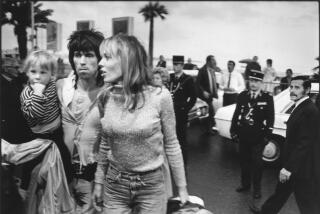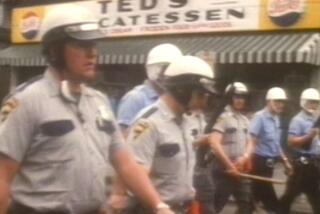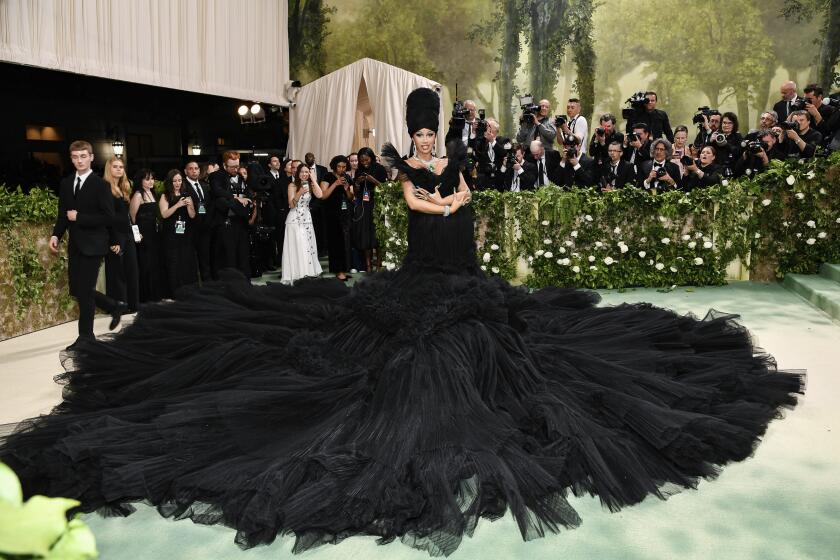Altered States : Many Women Are Turning to Tailors and Dressmakers During Financial Pinch
Forget about what her hairdresser knows. These days, it’s what her tailor knows that counts.
According to tailors and dressmakers, the economy has brought a definite change in the kind of merchandise they are handling. They say they are seeing more old treasures and fewer new treats.
A tight budget, or the thought of rough times ahead, has many of their clients--men and women--locked into clothing reruns. And reruns now account for as much as 70% of the alterations in some shops around Los Angeles.
The play-it-again crowd already has two role models: Princess Di, who reportedly didn’t wear anything new during a recent Canadian tour, and Bette Midler, who wore a recycled gown to the premiere of her latest film, “For the Boys.”
Midler needed two outfits for the event and asked costume designer Robert Turturice for one new and one remake. Turturice says the star “saved a substantial amount” by reworking the velvet gown she wore to this year’s Grammy Awards. “But that wasn’t the primary thing. In Bette’s words, it was a beautiful dress, and she was very interested in wearing that dress again in a different configuration.”
Whatever the reasons, new configurations are keeping alteration racks full. Marina, a Beverly Hills tailor who uses her first name only, says she sometimes restyles a garment so thoroughly, the only original thing left is the fabric. “But it’s cheaper than buying new. It might be a jacket that cost at least $500. And the whole remake is maybe $100.”
Shortening skirts, reducing the girth of shoulder pads, nipping in boxy jackets and changing sleeve construction constitute much of her work these days.
But more unusual items also cross her doorstep. A 40-year-old woman arrived with a load of silk blouses that she hadn’t worn since college. They were updated for $20 to $30 each. Leather jackets have been revitalized with fresh linings that cost $50 to $70. And at least one woman wasn’t willing to throw away her expensive bras after she lost weight. She brought them in to have the cups reduced.
Even new garments don’t always remind Marina of the good old days. “Last year, customers were bringing in $2,000 suits,” she recalls. “This year, they’re bringing in things from The Gap.”
At Glen Alterations in Bel-Air, owner Faye Sperling talks of similar changes. “When times were good, which means before the recession, the mix would be 70% new, 30% old. Now it is exactly the opposite.”
Most requests are for shorter skirts. Some clients are motivated by the savings; it costs a mere $12.50 to update a straight hemline here. But others who could afford to spend tell Sperling they prefer shortening an older garment to investing in what might be a fashion faux pas . “They’re afraid short is going to be out of style next year,” she says.
Dissatisfaction with current trends sends many women, including June Van Dyke, former assistant to costume designer Edith Head, into their closets and off to the dressmaker. For Thanksgiving Day this year, Van Dyke pulled out an 8-year-old Chanel jacket and a 5-year-old Valentino leather skirt. “For someone brought up in fashion, who loves fashion, the excitement is gone. It’s like a love affair that’s turned sour,” she says.
She believes top designers, such as Karl Lagerfeld for Chanel, are providing clients with expensive, “campy” clothing as a way to escape the realities of the ‘90s. “It’s like the Depression, when musicals were the big thing and people would go to the movies to escape the dreariness. Only it’s not working. People are not in the frame of mind to be the butt of ridicule.”
Van Dyke--who manages the Screen Smart Set charity shop in Los Angeles, where she is surrounded by movie-star-donated clothing--believes there is a better way to coax consumers into the stores.
“People are dressing conservatively. Even the kids who come in here are not wearing wild clothes,” she says. Designers should “get back to good, solid dressmaking and couture. If you have a beautiful product, people will buy it.”
More to Read
Only good movies
Get the Indie Focus newsletter, Mark Olsen's weekly guide to the world of cinema.
You may occasionally receive promotional content from the Los Angeles Times.






